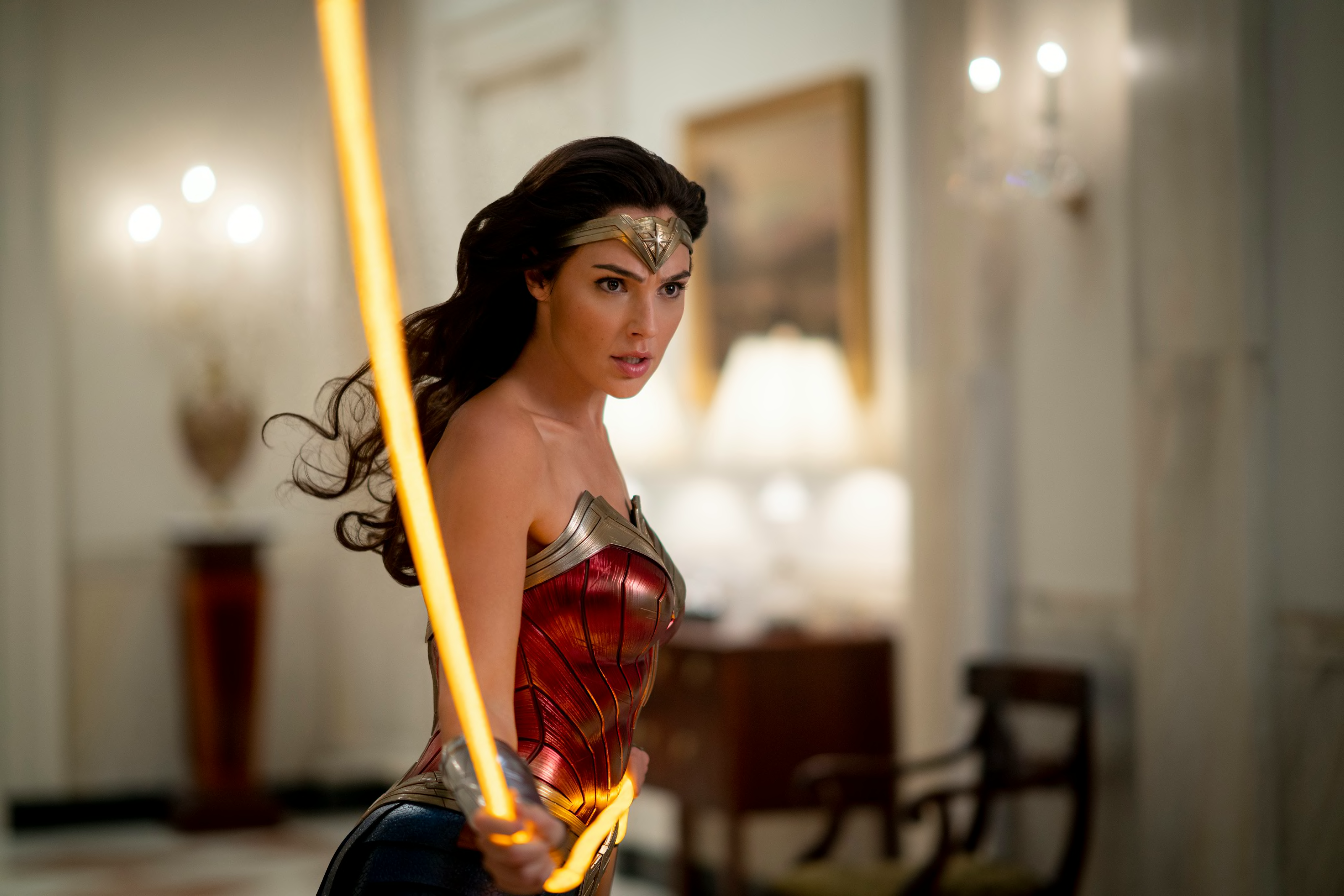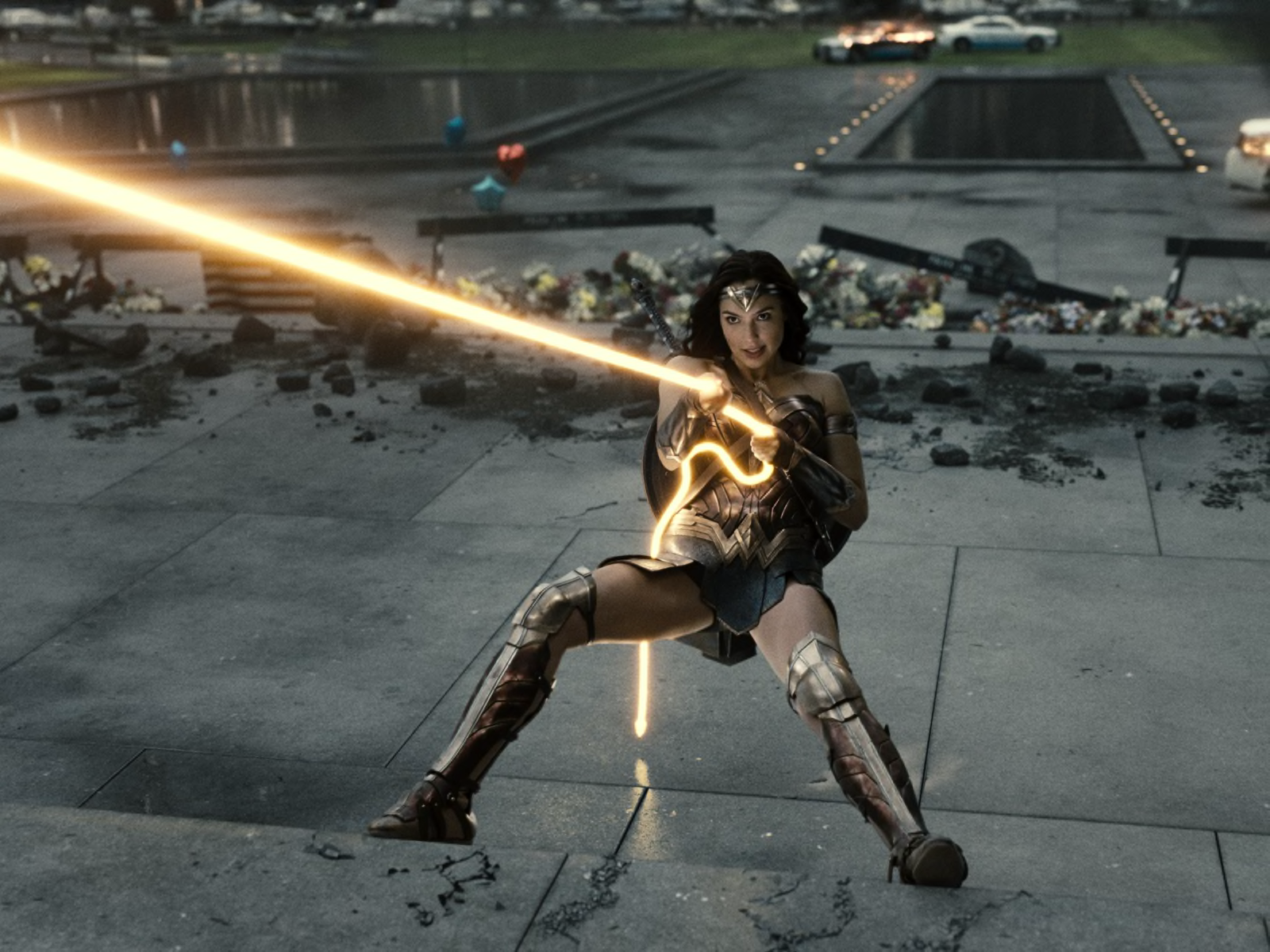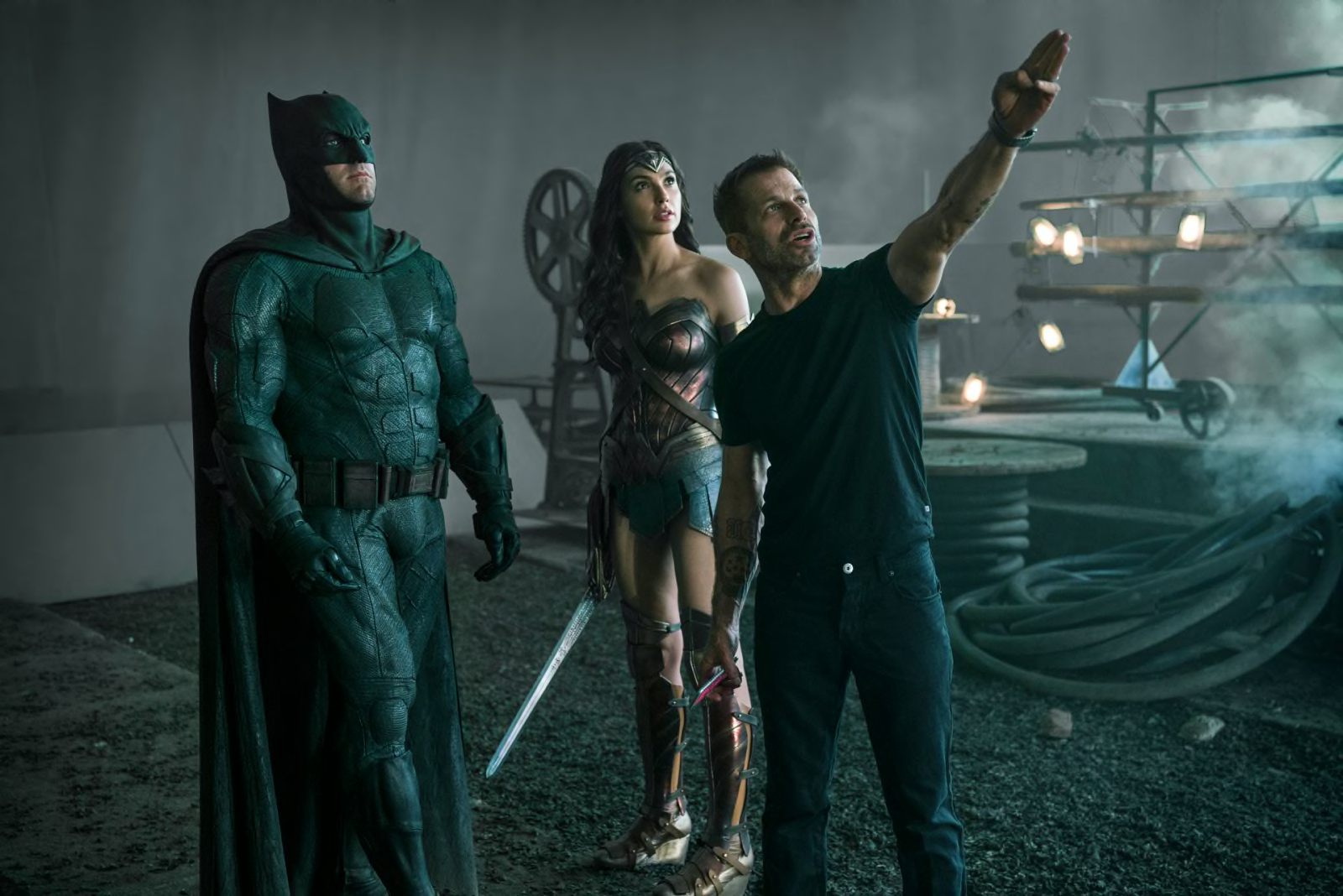Despite only getting to play Wonder Woman for a short time, Gal Gadot has cemented herself as the best version of the character. Here are all of her DC movies, ranked
Wonder Woman, and her alter ego, Diana Prince is one of DC’s most popular and underserved characters. Despite her over 80-year comic history and almost immediate recognizability, she also had the least amount of film presence, especially when compared to other DC heroes like Batman and Superman, who have gotten adapted for the big screen over and over.

However, that all changed when the character, played by Gal Gadot, was officially introduced to the DC Extended Universe in 2016. The actress was previously best known for her role as Giselle in the Fast and Furious franchise but has since become synonymous with the iconic hero.
Since then, the character has received two solo projects and has made numerous cameos across the franchise’s other films, making her the DCEU character with the most appearances. Since the franchise is set to experience a reboot and the role is confirmed to be recast for James Gunn’s DCU, here is every DC movie featuring Gal’s version of the character, ranked from worst to best.
6. Justice League

Although it is an ensemble film, Diana has a pretty important role in the story since she, along with Bruce, are the two responsible for bringing together the League to fight against Steppenwolf and his army of Parademons, who are seeking to take over the world using Motherboxes, ancient alien devices capable of terraforming the planet hidden on Earth thousands of years ago.
While he focused on getting Aquaman and the Flash on board, she’s the one who recruited Cyborg to join the team. She was also the only character, aside from Superman, to receive a solo project before the team-up. Her knowledge of Amazonian history also allowed her to provide the necessary exposition to Bruce and the audience about the incoming invasion.
By now, it’s no secret how much of a disaster the filming of Justice League was. While some films can survive that kind of on-set drama and miraculously release something halfway decent or even good, this was not one of those cases. It very obviously suffers from being the merging of two very different visions. Half is from Zack Snyder, who started the film, and the other half is from Joss Whedon, who took over mid-way and finished the project.
Even if you fix simple problems like the atrocious CGI used to remove Henry Cavill’s mustache or Steppenwolf’s design, it’s still an incredibly messy film that has essential pieces missing. The most glaring was Cyborg’s role, which got significantly cut down, limiting a character that was supposed to be the heart and soul of the story. When Zack Snyder’s version of the film ultimately came out, the differences between the two versions highlighted just how much of the story was changed.
While some decisions were understandable, the Snyder Cut overall provided a more well-rounded and coherent story, ending up being much better than what we got in theatres. What should have been the DCEU’s best project ended up being a spectacular failure and a prime example of what a comic book movie shouldn’t be. It was the final nail in the coffin for the franchise and ultimately led to the reboot we’re getting now.
5. Batman V. Superman: Dawn of Justice

Before this film, Superman and Batman had never shared the big screen, so the film had all the potential to be something special. While it’s not technically a sequel, it is a direct follow-up to Man of Steel and sees the world still grappling with the reveal of Superman almost two years prior. Bruce Wayne, still reeling from the Kryptonian Invasion and manipulated by Lex Luthor, feels that Superman has the potential to become a threat and decides to kill him, leading them into a conflict.
The film is full of issues, but the biggest is that it fundamentally misunderstands its two main heroes, turning Batman into a murderer and making Superman into a broody and gloomy version of himself that just doesn’t work. As a result, the fight between them and the resolution to that fight feels incredibly forced, especially since it all comes down to a coincidence. It also makes Superman’s death at the end feel hollow because of how little time he spends resembling the iconic version of the character.
Diana is first introduced in the narrative when she has a run-in with Bruce at a party while trying to recover some information Lex Luthor has on her. Later in the film, after Superman and Batman eventually realize their mothers share a name and put aside their differences, Diana, now wearing her armor and accompanied by her remarkable theme, joins them in the final battle against Doomsday, marking the first time the DC trinity had appeared together in live-action. While the film still ended up being one of the worst modern comic book projects, Wonder Woman’s inclusion was certainly a highlight.
4. Wonder Woman 1984

The much-anticipated sequel is set in the 80s, almost 70 years after the events of the first film, with Diana now working as an anthropologist for the Smithsonian Museum and operating as Wonder Woman in secret. One of the artifacts the museum gets is a Dreamstone, which is capable of granting wishes. Diana subconsciously uses it to bring back Steve Trevor, who died at the end of the previous film, causing him to possess the body of another man, a baffling decision that barely gets addressed.
Pedro Pascal’s Maxwell Lord, a television personality and con man, gets his hands on the stone and uses its power to give himself the ability to grant wishes, essentially turning himself into it. Lord begins using it to grant wishes for people in exchange for more power and influence while Diana chases him across the world to stop him. Lord eventually decides to use his resources to grant the wishes of everyone on the planet to make himself more powerful, plunging the world into complete chaos in a matter of seconds.
Eventually, after learning about the drawbacks of the stone and slowly losing her powers, Diana realizes that she has to move on and let Steve go to be strong enough to face Lord and save the world. While not as thematically inconsistent as the first one, the final confrontation with Lord is pretty anticlimactic as Diana defeats him by somehow convincing everyone in the world, including him, to undo their wishes.
Admittedly, it does have some great moments, such as when Diana uses magic to turn a plane invisible, a reference to her invisible jet from the comics, or when she uses her lasso to swing on lightning. We also get the hilarious role reversal from the original, with Diana being knowledgeable about the world and Steve as the fish out of water. It’s not unwatchable but is a massive drop in quality, which is surprising since Patty Jenkins, who helmed the first movie, returned to write and direct. While a third film could have rounded out the trilogy and made up for the issues in this one, that’s no longer a possibility.
3. The Flash

Not only is The Flash the latest DCEU film to be released, but it also features Gal’s most recent and final appearance as the character, which comes as a brief cameo at the start. The film begins with Barry getting a call from Alfred while on his way to work, asking him to help Bruce stop a robbery at Gotham General Hospital since all the other members of the Justice League are busy. While Barry saves a bunch of babies from the collapsing hospital, Bruce chases after the criminals.
The chase ends with Bruce and one of the criminals going over the side of a bridge, almost falling into the water before Diana shows up and saves them using the lasso of truth. After she pulls them to safety, there’s a brief gag in which they involuntarily begin to reveal secrets about themselves due to the lasso’s power. They manage to free themselves, and Diana flies off. Considering the movie is partially inspired by the Flashpoint storyline from the comics, which Wonder Woman has a significant role in, it is a bit surprising she didn’t have a larger one here.
The rest of the film is a mixed bag, with people either loving it or completely hating it. The biggest criticism most people have of the movie is its visual effects, which cause a decent amount of the film, especially the final fight showing the two versions of Barry, Supergirl, and Michael Keaton’s Batman facing off against Zod and an army of Kryptonians, to look unfinished. There’s also the less-than-ideal scene that uses CGI to bring back Christopher Reeve and several other deceased actors for cameos, which feels gimmicky and disrespectful.
However, since the entire story is about Barry wanting to use his powers to save his parents, the best elements of the film end up being the emotional beats, particularly the scenes with Barry saying his final goodbye to his mother after realizing that no amount of time travel could save her from dying. While it’s not the “greatest superhero film ever” like some have been claiming it is, it does have redeeming qualities that get ignored.
2. Shazam! Fury of the Gods

The movie is a sequel to Shazam!, another one of the few DCEU projects that were well-received. The first film focused on Billy’s adjusting to his new abilities, but since the rest of the kids also got powers towards the end, this one focuses more on them being the heroes of Philadelphia but growing more distant from each other and seeking independence. Billy struggles to keep them together while also dealing with the Daughters of Atlas, who believe the children are misusing the power of the gods and have come to take it back.
One of the things people loved about the first film was the comedic aspects, which felt like a nice departure from the over-serious nature of the franchise’s previous installments, and that humor is just as present in this film. A running gag in the movie is Billy’s crush on Wonder Woman, even having dreams about dating her early in the story.
While part of the gag is the fact that her face never gets shown in these dreams, it gets paid off later on when she fully appears in the film’s final moments, using her godly abilities to revive Billy Batson after he dies protecting his family, city, and the world from the Daughters of Atlas. She also restores the kids’ powers, allowing them to continue being heroes. It’s a decent follow-up to the original but isn’t a major step up in any significant way, which causes it to end up being pretty forgettable.
1. Wonder Woman

While Wonder Woman has been a part of several animated series, this was the first time she received a theatrically released live-action solo film. It had a lot riding on it after the disappointing releases of Man of Steel and Batman V. Superman: Dawn of Justice, but it surprised everyone by being one of the best and most memorable projects in the DCEU.
It sees Diana, a warrior living on the hidden island of Themyscira, rescue Steve Trevor, a pilot who crashlands there and inadvertently brings a bunch of German soldiers after him. After learning about World War I, Diana decides to leave Themyscira with Trevor to help end the war, which she believes is caused and can be stopped by defeating the Greek God, Ares.
As the film progresses, the optimistic Diana slowly realizes the truth about humanity. Although the third act does actively work against the themes of the movie and ends in a giant CGI battle, the first two are filled with some of the best moments we’ve gotten from the genre. The film was also monumental due to the lack of female-led superhero films, paving the way for other projects, like Captain Marvel and Birds of Prey, that would follow.





